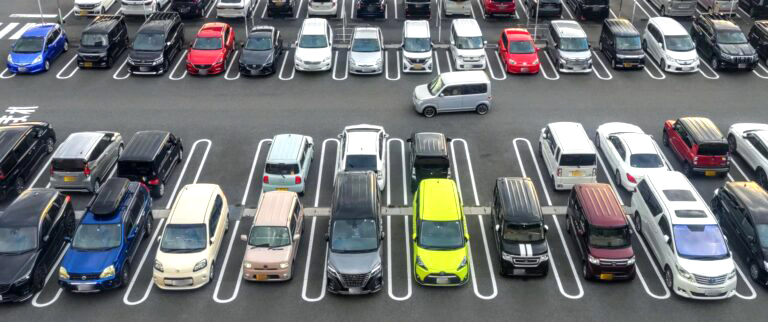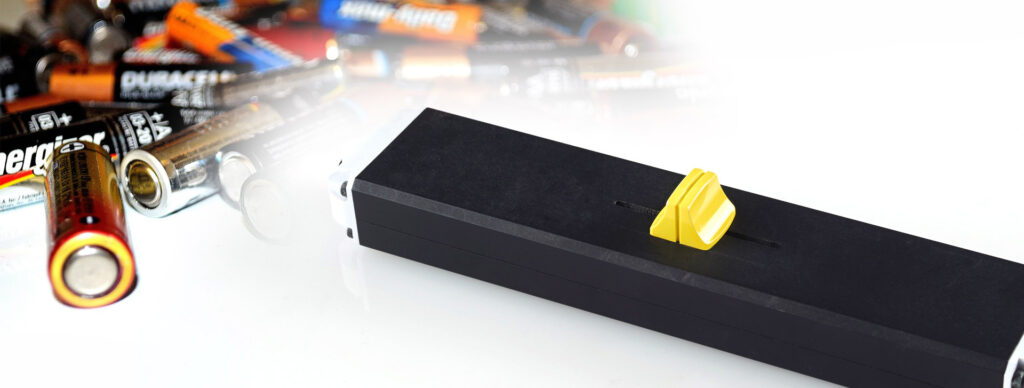IoT and Wireless Sensors: The inner workings of vibration-powered devices and how they contribute to the growing IoT field

IoT refers to the technology that allows devices to communicate with each other, and is used in a wide range of industries and applications. By incorporating sensors in various objects and connecting them to a network, information can be gathered and exchanged smoothly. However, there are some challenges associated with wide-spread adoption of wireless IoT sensors. Vibration-based power generators are vital for overcoming these challenges.
This article will describe the relationship between IoT and wireless sensors, the challenges for wireless sensors in IoT, and some solutions. Vibration-powered devices and how they work are also briefly introduced.
Table of contents [close]
The relationship between IoT and wireless sensors.

IoT is made up of sensors, networks, and the cloud, creating a method for collecting data without the need for manual intervention. Wireless communications technology is essential for transmitting this data. The IoT device must use a data communication method that is optimal for its purpose and environment. This relationship between IoT and wireless sensors is described below. To maximize utilization of the devices, it is important to recognize not only that IoT is used across a wide range of industries and applications, but also that the functionalities of the devices vary.
What is IoT?
IoT refers to the technology where “things” communicate with other things over the internet. It used to be that only IT devices such as computers and servers could exchange data over networks. Now, IoT technology can be used to allow other devices to communicate with each other directly and give them a much wider range of functionality.
IoT enables the collection of various types of information, including data related to human activities. This data can be managed and analyzed as big data, and it can be utilized in various scenarios and contexts.
Things that can be achieved with IoT.
IoT can be used for the following activities. In addition, because IoT continues to evolve, many new applications and businesses are likely be developed using IoT.
● Controlling things
With IoT, it is possible to control things such as air conditioners and doors from remote places. For example, devices like smartphones can be used to operate home appliances like air conditioners and lights from outside the home. Some newer air conditioners allow not just on/off controls but also temperature and airflow settings to be adjusted over IoT technology.
● Monitoring the status of things
Current operational conditions of lights and air conditioners can be checked remotely. In addition, statistics such as usage frequency and duration can be collected and used for business development and product optimization.
● Detecting the movement of things
Sensors that detect the movement of people and objects are being combined with IoT technology and deployed in many fields. For example, passengers waiting for buses and trains can learn how crowded they are in real time. They can also know the current conditions and take appropriate measures in case of any problems.
● Communicating between things
Smart buildings are well-known examples of objects communicating with each other over the internet. In addition to reducing energy consumption through automatic control of devices, IoT can be used to manage the entrance and exit of occupants.
IoT is being adopted in a wide variety of fields.
IoT technology has been applied to medicine, logistics, manufacturing, agriculture, transportation, and many other fields. Some examples of each are described below.
In medicine, wearable devices are being used to measure, digitize, and share biometric data of patients with doctors in real time. This allows patient conditions to be monitored remotely, expediting diagnosis and treatment if an abnormality is detected.
In logistics, IoT-based systems have been introduced to manage warehousing and delivery operations. From reception to shipment, greater operational efficiency can be achieved. IoT-based automation is also on the rise in the manufacturing industry. Here, IoT is expected to improve productivity and facility running times, and reduce damage caused by facility failures.
In agriculture, watering and fertilizer application can be automated based on data detected by IoT-enabled sensors. In addition, it is possible to improve productivity while saving human labor by remotely adjusting the temperature and air conditioning of greenhouses.
With the introduction of IoT in transportation, it is possible to grasp the delay status and other information for trains and buses in real time, allowing passengers to change their routes if necessary.
IoT has found uses in a wide variety of applications, and its usage is expected to continue growing in the future.
The role of wireless sensors in IoT.
With IoT, wireless sensors can be incorporated into other things and connected to the internet. Wireless sensors can therefore be considered an essential component of IoT devices.
There are many types of sensors for acquiring a wide variety of data. Therefore, sensors must be selected according to the type of data that is to be acquired and how that data will be used.
Challenges for wireless sensors in IoT

Some challenges facing wireless sensors in IoT applications are described in this section. Certain measures should be taken before installation to avoid time-consuming and costly modifications down the road.
Need to improve communication speed and reliability
When many IoT devices are deployed, the number of communications terminals increases. It is often difficult for conventional network systems to cope with this large increase in communications load.
There are therefore concerns that communication speed will decline and disconnections will increase as IoT proliferates. When considering the introduction and development of IoT networks, measures to address communication speed and communication interruptions must be taken.
Need to supply power to the sensor.
All sensors and communications devices require power. Such devices tend to be small, lightweight, installed in places where it is difficult to install a power supply, and operated remotely. In addition, the power consumption of wireless communications increases as the distance increases.
Therefore, methods to supply power to each device must be established before installation.
Solutions to Wireless Sensor Challenges

This section describes some solutions to the challenges faced by wireless sensors used in IoT. Implementation of these solutions before installation can prevent issues and failures down the road and ensure the device can be used effectively for a long time.
Solutions for communications challenges
5G, LPWA, and wireless modules present some solutions to the communications challenges mentioned. 5G has high speed, large capacity, high reliability, low latency, and allows for multiple simultaneous connections. It can help to fulfill some of the requirements of IoT, such as high-speed transfer of image data, high-density placement of sensors, and real-time control of objects and machines.
LPWA is a communications standard specialized for IoT. It features low power consumption, and long-distance, wide-range communications. Although communication speed is less than that of 5G, costs can be lower. It also uses less power. Small sensors with low data transfer volumes can be operated for long periods of time using LPWA. This is especially useful in environments where securing a power supply is difficult.
A wireless module is an electronic component that can communicate without being hardwired to a network or a power supply. Wireless communications functions can be provided by embedding wireless modules into devices and products. Wireless modules are therefore often used in IoT.
By combining 5G, LPWA, wireless modules, etc., according to the usage environment and usage conditions, the risk of communication delays and disconnections of wireless sensors can be reduced.
Solutions for providing power to IoT devices
Energy harvesting is one effective method for supplying power to wireless sensors. Energy harvesting can reduce or eliminate the need for securing a wired power source or installing and replacing batteries. Energy harvesting converts energy such as light, heat, and vibrations into electrical energy.
In the case of vibrations, the power supply problem can be solved by adopting a vibration-powered device. These devices can generate power from the vibrational energy generated when machines, buildings, and objects move.
Mechanisms of vibration-powered devices
Vibrational power solves the problem of powering wireless sensors. The advanced vibration-powered devices developed by Orbray can be used to operate IoT sensors using self-generated power.
In addition, Orbray’s products are able to produce power from a wide range of vibrational movements, and each can be customized to the specific needs of the customer and application.
Summary

Due to its ability to collect and display information about remote objects in real time, the use of IoT technologies is rapidly increasing in many fields. When the devices are located in places that are difficult to reach or connect to power supplies, wireless sensors must be used.
To ensure that the wireless sensors, which are essential to the IoT network, are effectively used, issues related to communication speed and power supply must be addressed, such as through the use of 5G, LPWA, and wireless modules. Power supply challenges can be overcome with Orbray’s wide range of vibration-powered devices.
To learn more about Orbray’s vibration-powered devices for IoT, please click the link below.
https://orbray.com/ehiot/batteryless_device.html
-
Transmission Distance of IoT Devices

-
Types and benefits of vehicle detection sensors for parking lot management

-
Issues in implementing Energy harvesting devices

-
Securing power for IoT devices

-
Power Generated by Environmental Harvesting

-
The possibilities of Energy Harvesting: A world of self-powered devices



